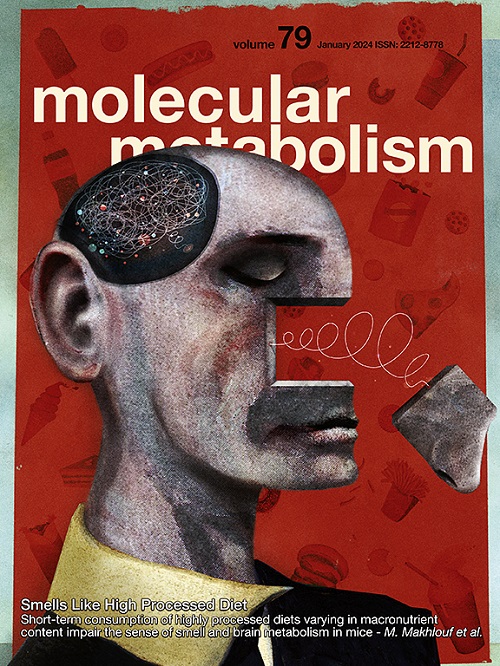运动训练重塑器官间内分泌网络。
IF 6.6
2区 医学
Q1 ENDOCRINOLOGY & METABOLISM
引用次数: 0
摘要
运动诱导全生物体的分子适应,部分由响应急性和慢性身体活动而释放的体液因子介导。然而,训练诱导的分泌因子对内分泌影响的程度和特异性尚不清楚。在这里,我们应用系统遗传学方法,利用多组织转录组学和蛋白质组学数据,从运动分子传感器联盟(MoTrPAC)中收集耐力训练大鼠的数据,量化器官间内分泌网络。8周的耐力训练显著改变了多个起源-目标组织对内分泌影响的幅度和特异性。皮下白色脂肪组织成为受训练影响的关键内分泌调节因子,而细胞外基质衍生因子被确定为训练动物与久坐动物的全局调节分泌特征。值得注意的是,分泌Wnt信号因子被确定为运动诱导的多种组织内分泌适应的关键介质。我们的系统遗传学框架提供了一个前所未有的器官间通讯图谱,耐力运动显著重塑,为新的运动发现提供了宝贵的资源。本文章由计算机程序翻译,如有差异,请以英文原文为准。
Exercise training remodels inter-organ endocrine networks
Background
Exercise induces organism-wide molecular adaptations, partly mediated by humoral factors released in response to acute and chronic physical activity. However, the extent and specificity of endocrine effects from training-induced secreted factors remain unclear.
Methods
Here, we applied systems genetics approaches to quantify inter-organ endocrine networks using multi-tissue transcriptomics and proteomics data collected from endurance-trained rats in The Molecular Transducers of Physical Activity Consortium (MoTrPAC).
Results
Eight weeks of endurance training significantly altered both the magnitude and specificity of endocrine effects across multiple origin-target tissue pairs. Subcutaneous white adipose tissue emerged as a key endocrine regulator impacted by training, while extracellular matrix-derived factors were identified as globally regulated secretory features in trained vs sedentary animals. Notably, secretory Wnt signaling factors were identified as key mediators of exercise-induced endocrine adaptations in multiple tissues.
Conclusion
Our systems genetics framework provides an unprecedented atlas of inter-organ communication significantly remodeled by endurance exercise, serving as a valuable resource for novel exerkine discovery.
求助全文
通过发布文献求助,成功后即可免费获取论文全文。
去求助
来源期刊

Molecular Metabolism
ENDOCRINOLOGY & METABOLISM-
CiteScore
14.50
自引率
2.50%
发文量
219
审稿时长
43 days
期刊介绍:
Molecular Metabolism is a leading journal dedicated to sharing groundbreaking discoveries in the field of energy homeostasis and the underlying factors of metabolic disorders. These disorders include obesity, diabetes, cardiovascular disease, and cancer. Our journal focuses on publishing research driven by hypotheses and conducted to the highest standards, aiming to provide a mechanistic understanding of energy homeostasis-related behavior, physiology, and dysfunction.
We promote interdisciplinary science, covering a broad range of approaches from molecules to humans throughout the lifespan. Our goal is to contribute to transformative research in metabolism, which has the potential to revolutionize the field. By enabling progress in the prognosis, prevention, and ultimately the cure of metabolic disorders and their long-term complications, our journal seeks to better the future of health and well-being.
 求助内容:
求助内容: 应助结果提醒方式:
应助结果提醒方式:


